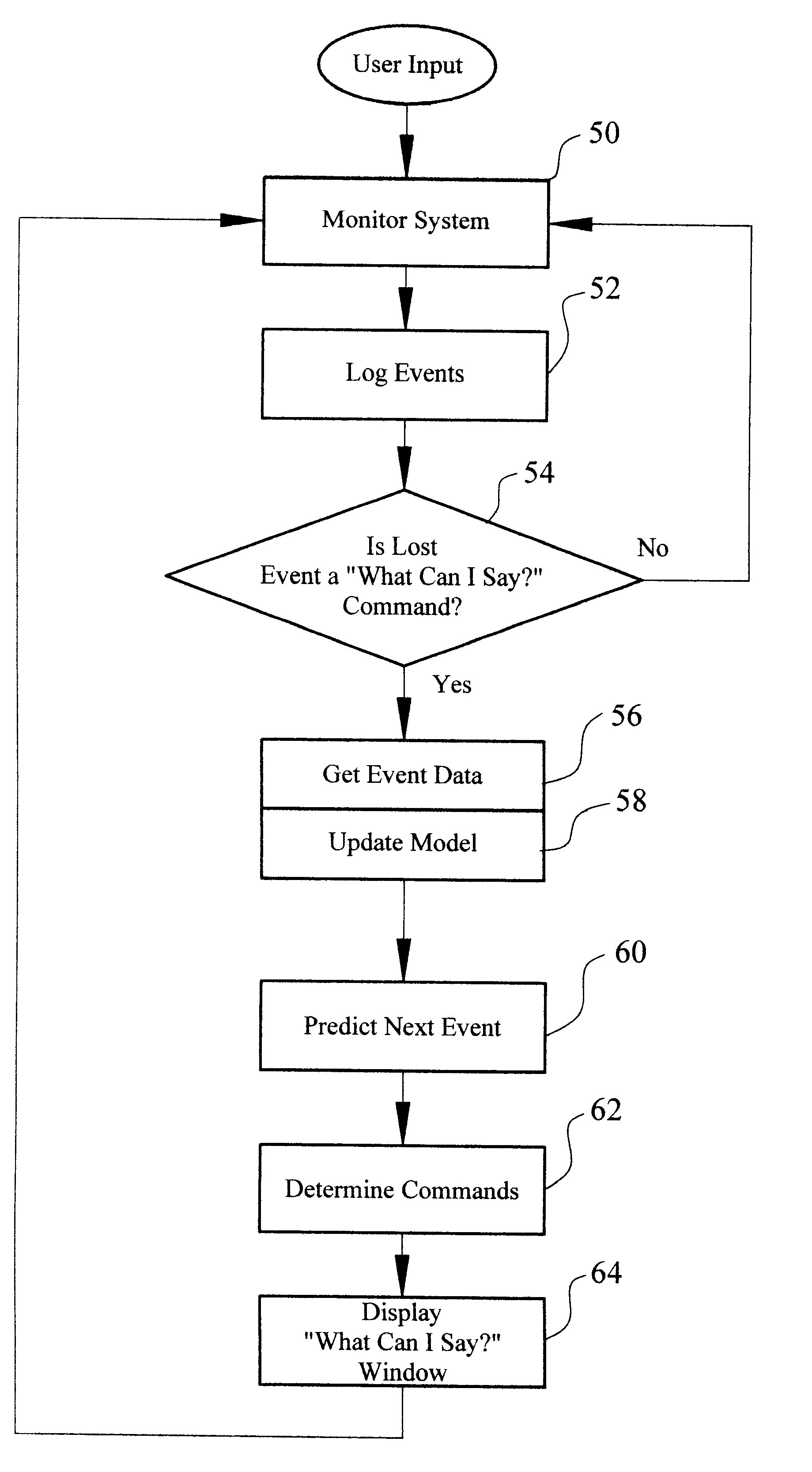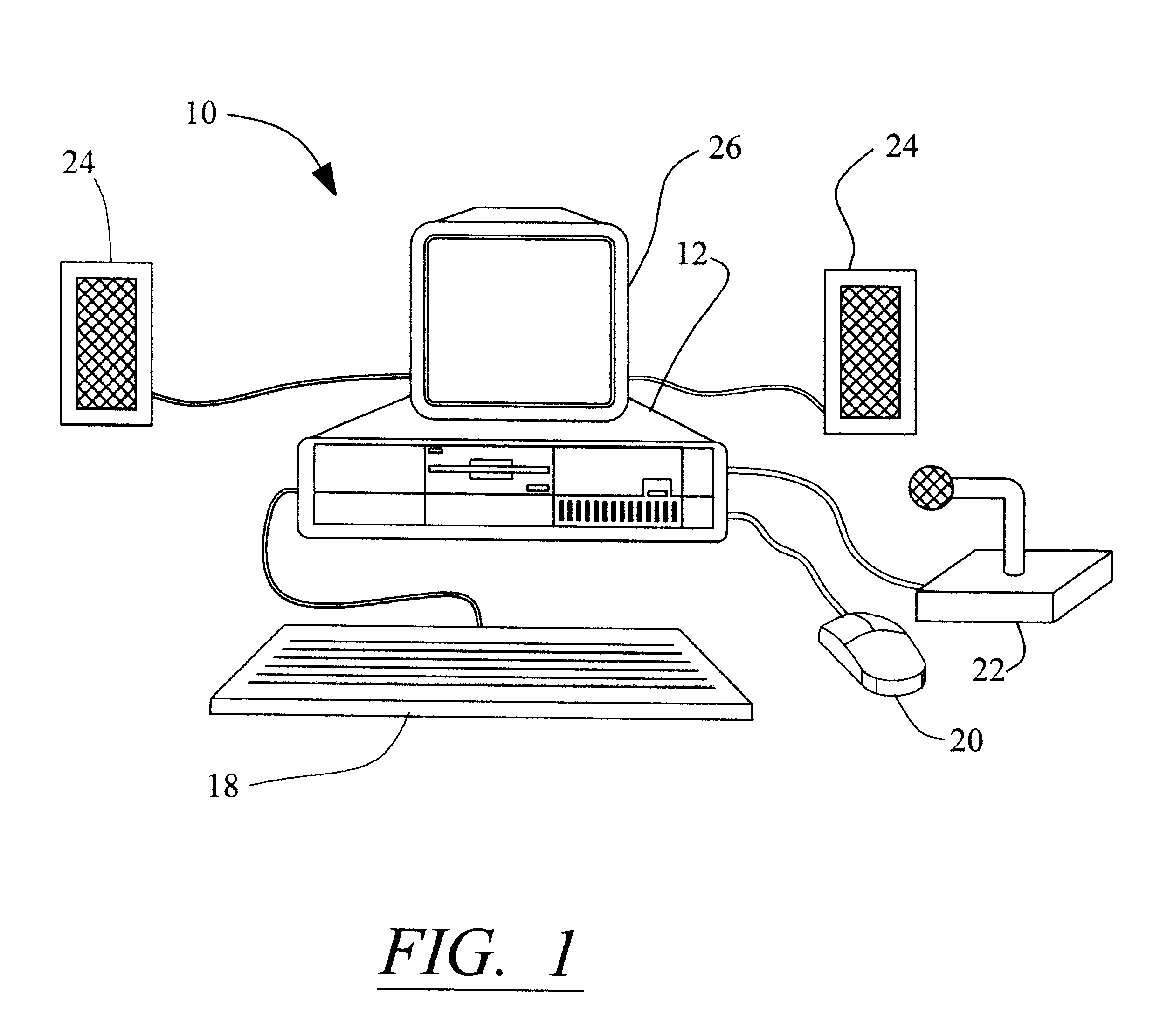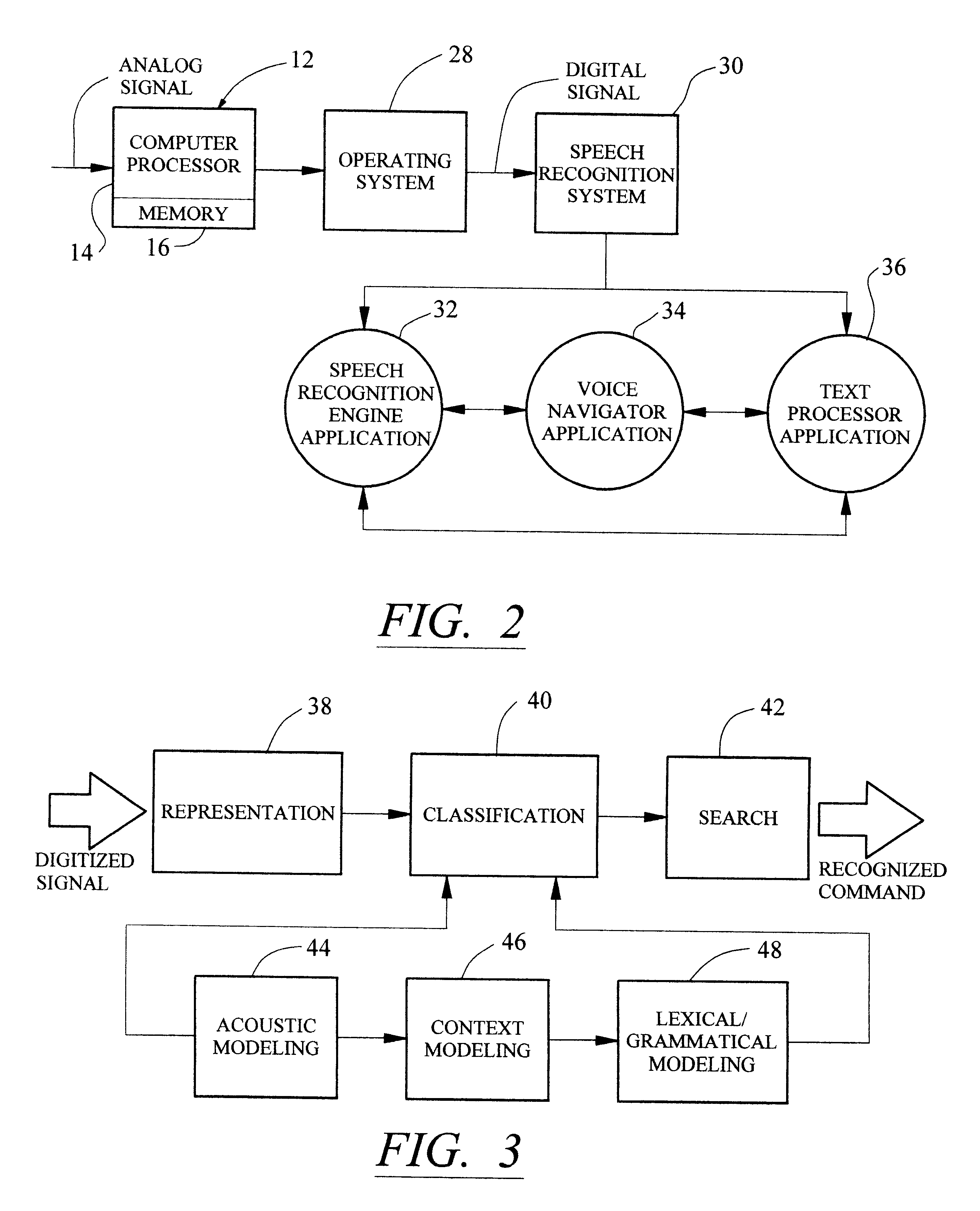Method and apparatus for providing an event-based "What-Can-I-Say?" window
a technology of event-based "what-can-i-say?" and window, applied in the field of computer speech recognition, can solve the problems of not achieving the flexibility of nlu recognition, system has little utility for users who do not, and speech recognition is generally a difficult problem, so as to reduce the number of commands displayed, efficient and intelligent selection
- Summary
- Abstract
- Description
- Claims
- Application Information
AI Technical Summary
Benefits of technology
Problems solved by technology
Method used
Image
Examples
Embodiment Construction
Referring to the drawings in detail, wherein like reference characters represent corresponding elements throughout the several views, more specifically referring to FIG. 1, a computer system with which the present invention may be practiced is referred to generally by reference number 10. The computer system 10 is preferably comprised of a computer 12 having a central processing unit 14 (FIG. 2), at least one memory device 16 and related electronic circuitry (not shown). The computer system 10 also includes user input devices, a keyboard 18 and a pointing device 20, a microphone 22, audio loud speakers 24, and a video display 26, all of which are operatively connected to the computer 10 via suitable interface circuitry. The keyboard 18, pointing device 20 and loud speakers 24 may be a part of the computer system 10, but are not required for the operation of the invention, and the video display 26 may have a touch sensitive screen for user input.
Generally, the computer system 10, as ...
PUM
 Login to View More
Login to View More Abstract
Description
Claims
Application Information
 Login to View More
Login to View More - R&D
- Intellectual Property
- Life Sciences
- Materials
- Tech Scout
- Unparalleled Data Quality
- Higher Quality Content
- 60% Fewer Hallucinations
Browse by: Latest US Patents, China's latest patents, Technical Efficacy Thesaurus, Application Domain, Technology Topic, Popular Technical Reports.
© 2025 PatSnap. All rights reserved.Legal|Privacy policy|Modern Slavery Act Transparency Statement|Sitemap|About US| Contact US: help@patsnap.com



